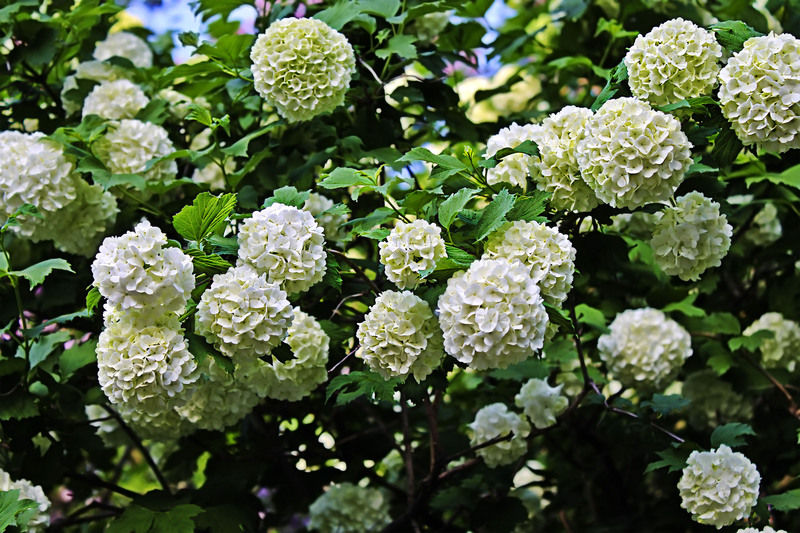Fending Off Winter's Chill to Preserve Your Garden
Posted on 04/07/2025
As the crisp air sets in and the days grow shorter, gardeners everywhere face the annual challenge: How can you preserve your beautiful garden through the harsh winter months? Fending off winter's chill to safeguard your garden is crucial for sustaining plant health, ensuring a vibrant spring, and protecting your investment of time and resources. In this comprehensive guide, we'll explore effective, proven strategies for protecting your plants from winter cold, maintaining soil vitality, and keeping pests at bay--all while enhancing your garden's resilience for seasons to come.
Understanding the Impact of Winter on Your Garden
Before diving into preservation techniques, it's essential to comprehend how winter affects various elements in your garden:
- Frost and Freezing Temperatures: Permanently harm unprotected plants, rupturing cells and causing unsightly damage or death.
- Heavy Snow and Ice: Break branches, flatten perennials, and create excess weight that damages smaller shrubs.
- Wind Chill: Dries out exposed foliage and can strip moisture from evergreens.
- Reduced Sunlight: Leads to slower photosynthesis and increased plant dormancy.
Recognizing these risks is vital as you begin shielding your garden from the ravages of winter.

Assessing Your Garden's Unique Winter Needs
Every garden is different. The size, layout, plant species, and local climate all play significant roles in your winter-preparation strategy. Here's what you should take into account before fending off winter's chill:
- USDA Hardiness Zone: Determines which plants are likely to survive your area's lowest temps.
- Plant Variety: Some exotic or tender perennials need extra attention, while natives may be more resilient.
- Microclimates: Watch out for wind tunnels, low spots prone to frost accumulation, and sun-exposed areas.
Make a thorough inventory of your garden, noting plants that have struggled in past winters and creating a checklist for the season ahead.
Winter Garden Preparation: Best Practices
Mulching: Nature's Insulating Blanket
One of the most effective ways to protect your garden in winter is through the use of mulch. Mulch acts as an insulator, maintaining more even soil temperatures and shielding roots from rapid freeze-thaw cycles. Here's how to use mulch properly:
- Apply 2-4 inches of material, such as straw, bark chips, shredded leaves, or pine needles.
- Leave a small gap around plant stems to prevent rot.
- Refresh mulch as needed after heavy rain or snow compacts it.
Did you know? Mulching also suppresses winter weeds, reducing your workload in spring.
Watering Before the Freeze
Proper hydration is essential before soil freezes. Well-watered plants can withstand winter's chill better because their cells are less likely to rupture from freezing. Remember:
- Water deeply before the first hard frost, especially for evergreens and new plantings.
- Avoid overwatering, as soggy soil can lead to root rot.
- Irrigate early in the day to allow foliage to dry before temperatures plummet.
Pruning for Protection
Late fall is a good time to selectively prune:
- Remove dead or diseased branches, which are more vulnerable to snow and wind damage.
- Avoid heavy pruning, which can stimulate new, tender growth that winter's chill may kill.
Pruning also improves airflow, reducing the risk of fungal diseases during wet, cold stretches.
Coverings and Structures: Shielding Plants from Winter Cold
Frost Cloths, Row Covers, and Cloches
If you want to protect vulnerable crops and ornamentals from chilling winds or sudden frosts, physical barriers are invaluable.
- Frost cloths and garden blankets: Offer lightweight insulation without smothering plants.
- Row covers: Create a microclimate, maintaining 4-8 degrees of warmth underneath.
- Cloche domes or plastic jugs: Great for shielding individual tender plants.
Securely anchor covers to prevent wind from dislodging them. Remove temporarily on sunny days to avoid overheating.
Cold Frames and Mini Greenhouses
Cold frames and portable greenhouses make it possible to extend your growing season and fend off winter's worst:
- Construct cold frames over garden beds to shelter salad greens, herbs, and seedlings.
- Use clear panels or old windows to admit sunlight while blocking cold air and precipitation.
- Ventilate on mild days to prevent fungal issues.
Mini greenhouses are perfect for overwintering tender perennials or propagating cuttings for spring.
Special Care for Delicate Plants
Tender Perennials and Exotics
Plants that originate from tropical or Mediterranean climates can't survive even brief cold snaps. To preserve these delicate garden treasures, try:
- Potting up and moving indoors to a bright, cool room or sunroom.
- Wrapping with burlap and stuffing with straw for insulation.
- Grouping containers against the house for shared warmth and wind protection.
Tip: Acclimate plants slowly to indoor or protected environments over a week to avoid shock.
Bulbs and Root Crops
- Dig up tender bulbs (like dahlias, cannas, and gladiolus) after the first frost, dry, and store in a cool, dark place.
- For root crops (such as carrots and parsnips), mulch thickly and harvest as needed during winter thaws to keep supplies fresh.
Evergreens and Trees
Winter winds can dehydrate evergreen foliage. To prevent browning and needle loss:
- Water deeply in late fall.
- Apply anti-desiccant sprays on mild, dry days for added protection.
- Wrap young trunks with tree guards or burlap to prevent sunscald and critter damage.
Maintaining Soil Health During the Winter
Healthy soil is the foundation of a resilient garden in winter and beyond. Here's how to keep it robust:
- Clear away disease-prone debris, but allow some organic matter (like chopped leaves) to decompose and feed soil microbes.
- Plant cover crops (green manure) such as winter rye, clover, or vetch. These crops suppress weeds, prevent erosion, and boost fertility when tilled under in spring.
- Avoid compacting saturated soil by staying off beds during winter thaws.
Composting in Winter
While composting slows in cold weather, you can still:
- Add kitchen scraps and dry leaves to piles, turning occasionally when possible.
- Insulate heaps with straw or old blankets.
Active microbial life ensures a jumpstart for your spring gardening.
Winter Garden Pests and Problems to Watch
Even during winter's dormancy, some pests persist. Here's how to defend your garden from winter invaders:
- Check for signs of rodent activity (gnawing on bark or roots). Use tree guards, repellents, and tidy up fallen produce to deter activity.
- Monitor for fungal diseases, especially under dense snow packs. Gently brush off heavy snow from shrubs and evergreens.
- Purge decaying plant matter that could harbor overwintering pest eggs or disease spores.
Planning Ahead: Setting Your Garden Up for Spring Success
Keeping Records and Evaluating Strategies
Take detailed notes on what works each winter. Record weather patterns, plant survival, and which techniques best helped you fend off winter's chill. This ongoing learning will shape next year's winter preparation, saving you time and heartache.
Early Spring Inspections
As the ground thaws, walk your garden:
- Remove protective mulches layer by layer to avoid shocking emerging shoots.
- Check for mold, rot, or signs of winter injury.
- Refresh soil and compost around perennial beds.

Frequently Asked Questions
How do I know which plants need the most protection in winter?
Identify any plants marked as "tender" or "not hardy in your zone." Young trees, newly planted shrubs, and non-native perennials often benefit from extra safeguards. Always check your plant tags and research specific species for their winter hardiness.
Can I continue gardening all winter long?
Yes--with the right structures, such as cold frames and mini greenhouses, you can grow cold-hardy greens and herbs throughout the winter. Container gardening indoors is another viable option for year-round growing.
Is it too late to protect my garden if I've already had a frost?
It's never too late to start! While some frost damage cannot be reversed, adding mulch, removing damaged growth, and employing coverings can still help preserve your garden from further winter harm.
Conclusion: Embrace Winter, Preserve Your Garden
Fending off winter's chill to preserve your garden is about preparation, vigilance, and care. Every action--from mulching and pruning, to securing protective coverings and monitoring for pests--builds a healthier, more resilient landscape.
The bounty of your spring and summer garden depends on the efforts you take during these cold months. So bundle up, assess your needs, implement these winter preservation techniques, and your cherished green space will emerge renewed and ready to thrive when the thaw arrives.
Don't let winter's harshness freeze your gardening ambitions. With these tips, your garden will weather the storm--and reward you tenfold in the warmth of spring.

